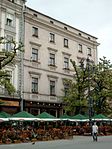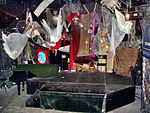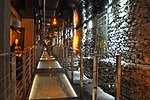Church of St. Casimir the Prince, Kraków
1672 establishments in the Polish–Lithuanian Commonwealth17th-century Roman Catholic church buildings in PolandBaroque church buildings in PolandFranciscan churches in PolandRoman Catholic churches completed in 1672 ... and 1 more
Roman Catholic churches in Kraków

The Church of St. Casimir the Prince (Polish: Kościół św. Kazimierza Królewicza) in Kraków, Poland – with the adjacent Franciscan monastery and the catacombs – is located at ul. Reformacka 4 street in the Old Town district (Stare Miasto). Members of the Catholic Order of Franciscans known as "Little Brothers" arrived in Kraków in 1622 and settled at the outskirts of the town in Garbary (1625).
Excerpt from the Wikipedia article Church of St. Casimir the Prince, Kraków (License: CC BY-SA 3.0, Authors, Images).Church of St. Casimir the Prince, Kraków
Reformacka, Krakow Stare Miasto (Old Town)
Geographical coordinates (GPS) Address Nearby Places Show on map
Geographical coordinates (GPS)
| Latitude | Longitude |
|---|---|
| N 50.064722222222 ° | E 19.936111111111 ° |
Address
Klasztor Reformatów
Reformacka
31-012 Krakow, Stare Miasto (Old Town)
Lesser Poland Voivodeship, Poland
Open on Google Maps










